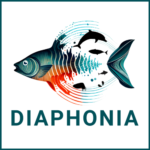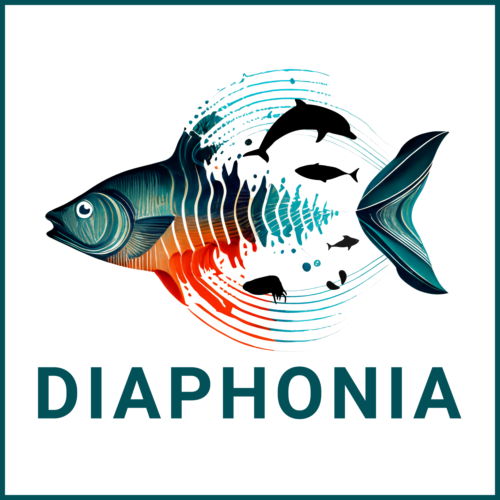Research
Project description
DIAPHONIA is a three-year international project, running from December 2022 to December 2025, and one of the five projects selected through JPI Oceans’ Joint Call on Underwater Noise in the Marine Environment, which looks specifically at the ‘Effects of anthropogenic noise pollution on marine ecosystems‘.
Our research objectives are to fill knowledge gaps and provide complementary insights for the elaboration of a diagnostic framework to assess and predict the impact of underwater noise on marine life. Therefore, the target species include diverse marine organisms of the food web, including invertebrates and commercial fish species of various European basins.
This framework will incorporate behaviroual, physiological and pathological (molecular and structural) alterations associated with noise overexposure from various anthropogenic sound sources, that can be measured and assessed within an evidence-based approach that incorporates veterinary medicine and bioacoustics
To develop a possible diagnostic fingerprinting approach composed of several tissue markers incorporating molecular, metabolomic and microscopic techniques.
To explore the relationship between behavioural and cellular/molecular/organ effects of both long- and short-term noise exposure in fish and invertebrates.
To gain insight into the morphofunctionality of the hearing apparatus in marine mammals and its role in defining the animal’s acoustic sensitivity.
Aims
Diagnostic framework

Protein and molecular biomarkers are at the center of the framework to accurately and quantitatively assess noise exposure in living organisms underwater
protein and molecular biomarkers for noise exposure in marine mammals

Fish behavioural, physiological, and metabolomic studies will bring direct insight into behavioural and physiological responses to anthropogenic noise
FISH behaviour and pathophysiology

The complexity of biological organisms has precluded the study of sound propagation into their tissues up to this day. Advanced modeling could novel invaluable insights
SOUND WAVE PROPAGATION MODELS FOR BIOLOGICAL TISSUES

The central nervous system of cetaceans has the potential to show medium and long term effects of auditory damages through cytoarchitectural changes and cell deaths
DIAGNOSTIC fingerprinting central nervous system in cetaceans

Invertebrates are another potential victim of impulsive noise, which could cause detrimental effects to their sensory and physiological systems
impulsive noise and invertebrates

The potential of 3D tissue cultures is huge, and can help understand the molecular pathways underpinning hearing damage on well differentiated neuroepithelia
3D neuroepithelial tissue cultures
Dissemination
Other JPI projects (maybe put these in partner page?)

DIagnostic framework to Assess and Predict tHe impact Of underwater NoIse on mArine species
info@diaphonia.eu
Funding Agencies

SUPPORTED BY





